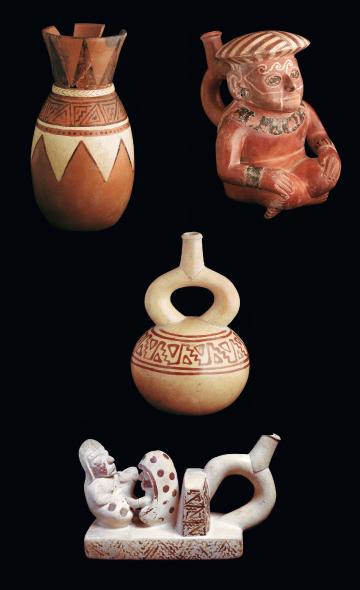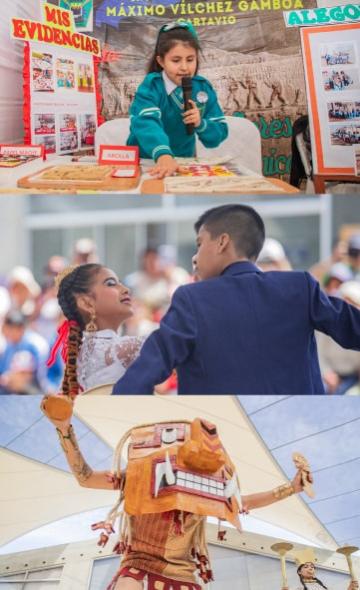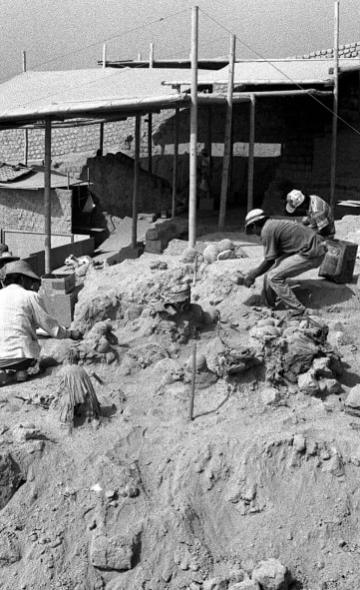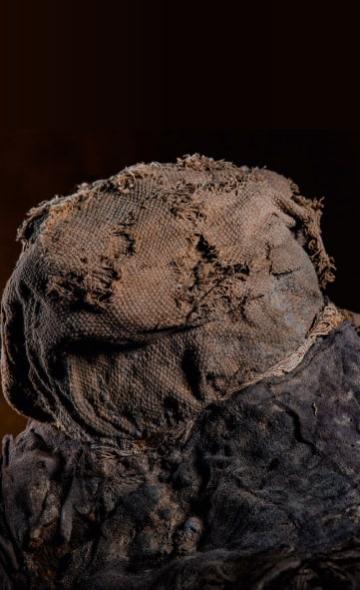- Visitors
- Researchers
- Students
- Community
- Information for the tourist
- Hours and fees
- How to get?
- Virtual tours
- Classic route
- Mystical route
- Specialized route
- Site museum
- Know the town
- Cultural Spaces
- Cao Museum
- Huaca Cao Viejo
- Huaca Prieta
- Huaca Cortada
- Ceremonial Well
- Walls
- Play at home
- Puzzle
- Trivia
- Memorize
- Crosswords
- Alphabet soup
- Crafts
- Pac-Man Moche
- Workshops and Inventory
- Micro-workshops
- Collections inventory
- News
- Students
- The tomb of the Lady of Cao: What objects were found inside?
News
CategoriesSelect the category you want to see:

International academic cooperation between the Wiese Foundation and Universidad Federal de Mato Grosso do Sul ...

Clothing at El Brujo: footwear ...
To receive new news.
Por: Complejo Arqueológico El Brujo
The discovery of the tomb of the Lady of Cao is considered to be one of the most important archaeological events in the study of the Andean past. Not only because of the sex of the personage belonging to the Mochica elite, but also because of its good state of conservation.
Funerary practices in the pre-Hispanic Andes are diverse depending on the time, region and cultural group. Next, we tell you more details about the burial of the Lady of Cao and the objects that accompanied her remains.
It is estimated that the death of the Lady of Cao occurred between the fourth and fifth centuries AD and her body was carefully wrapped by a complex series of 22 layers of fabric and cotton fibers, which in turn contained a fine trousseau. The layers were organized in three stages up to the completion of a final bundle 181 cm long, 75 cm wide and 42 cm thick; with a total weight close to 120 kilos.
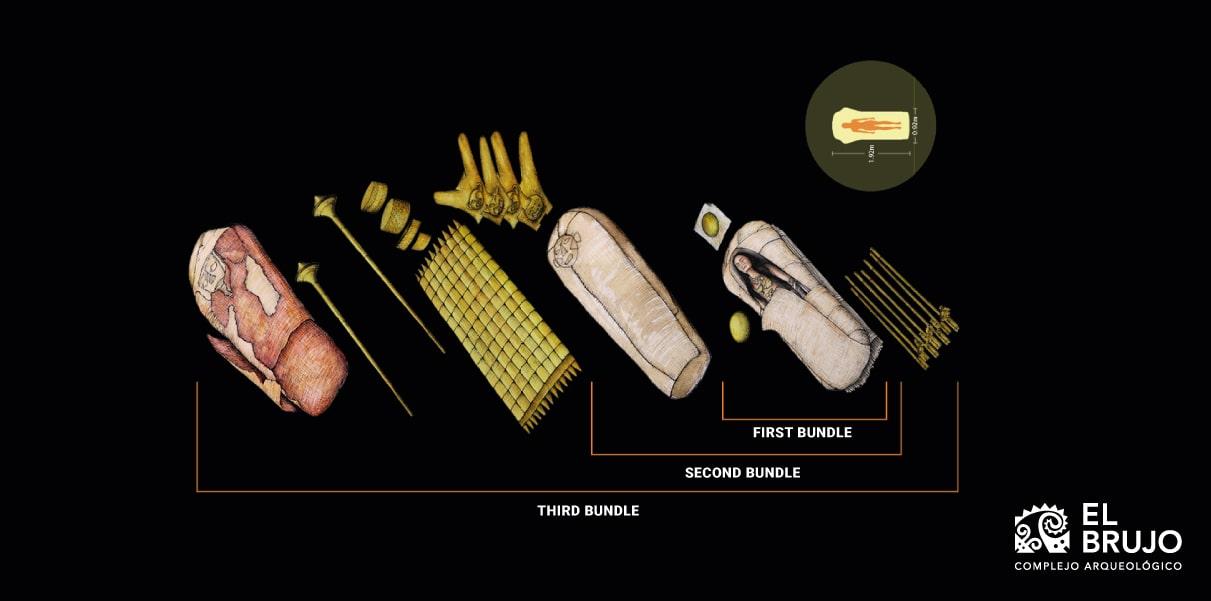
What objects were found in the tomb of the Lady of Cao?
A jug with the representation of an owl was one of the first pieces of ceramics found in the tomb of the Lady of Cao. The particular position of this vessel gives us a more accurate idea of its use as a container for the offering of liquids, probably chicha.
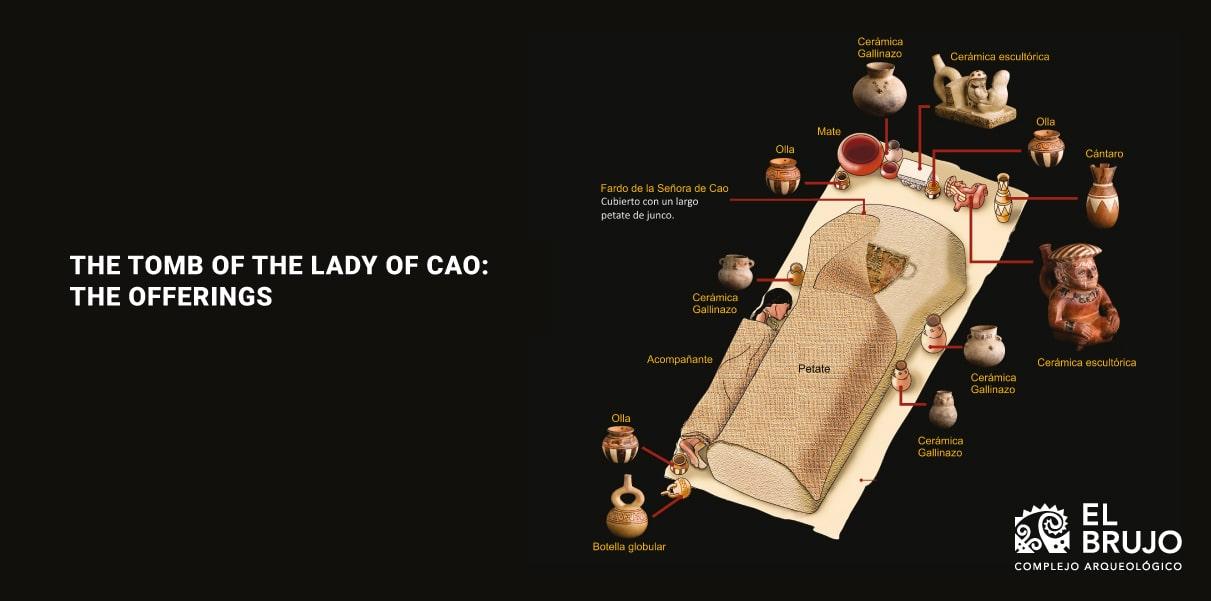
Another curious find in the tomb of the Lady of Cao is the extended skeleton of a male teenager, killed by strangulation by means of a reed rope that he still kept around his neck.
In total, there were eleven vessels accompanying the bodies as offerings. Seven of them in the Mochica style and four in the Gallinazo (Buzzard) style.
Of the vessels found, two of them are sculptural bottles in the Mochica style, which are on display in the Site Museum of the El Brujo Archaeological Complex.
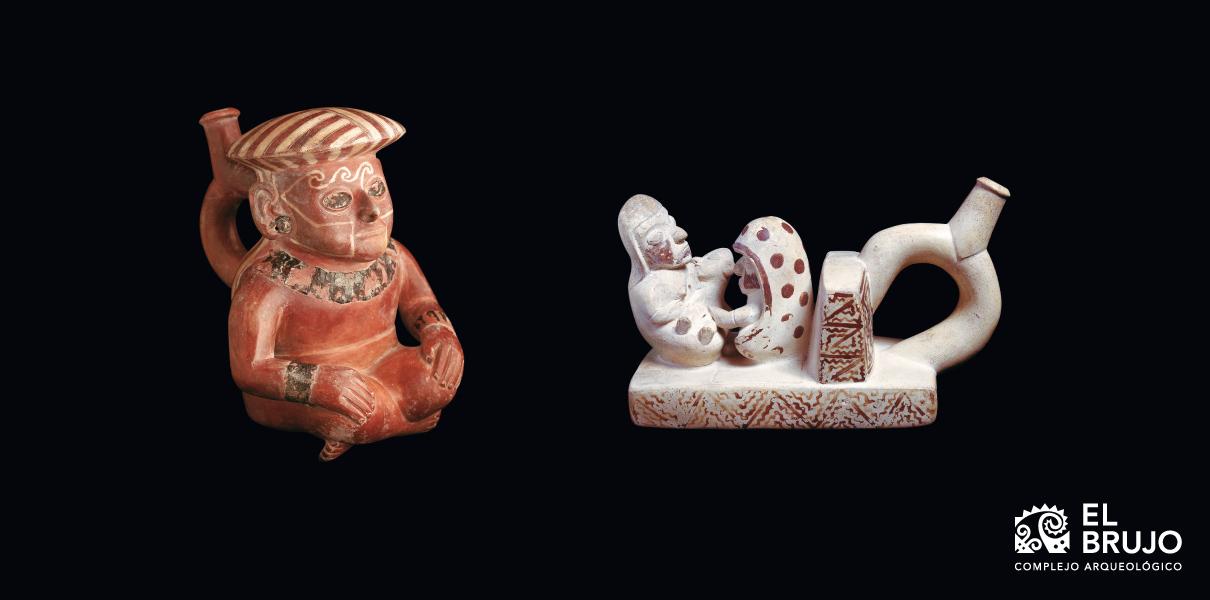
The first one represents a seated character with a headdress, with inlays in the eyes, a necklace and two bracelets. And the other one is made of kaolin (white clay) and represents a female healer, who is placing her hands over the body of a girl who is held by a woman, apparently her mother.
Visit our website to learn more about the Lady of Cao and her fascinating history, here.
Students , outstanding news


